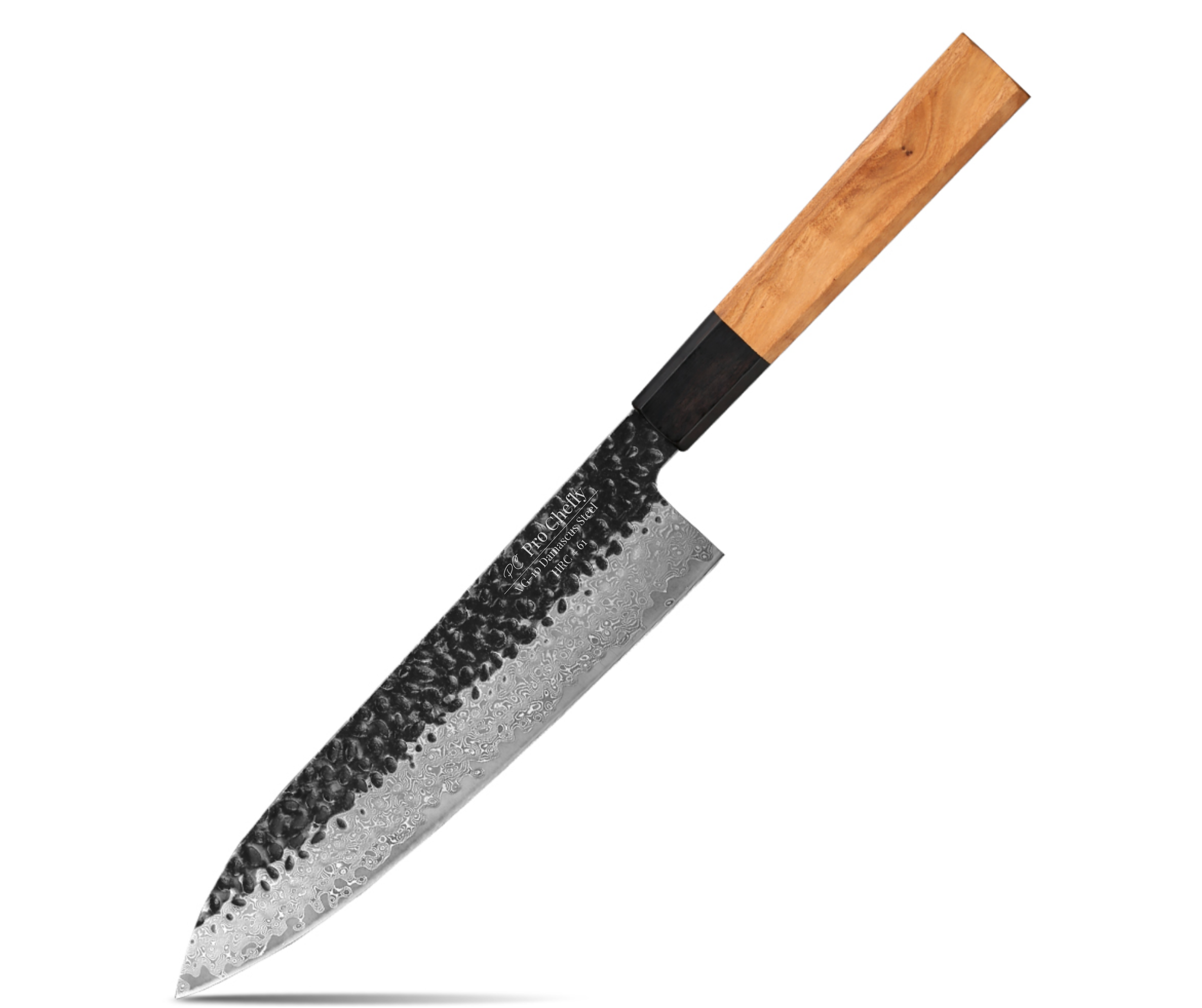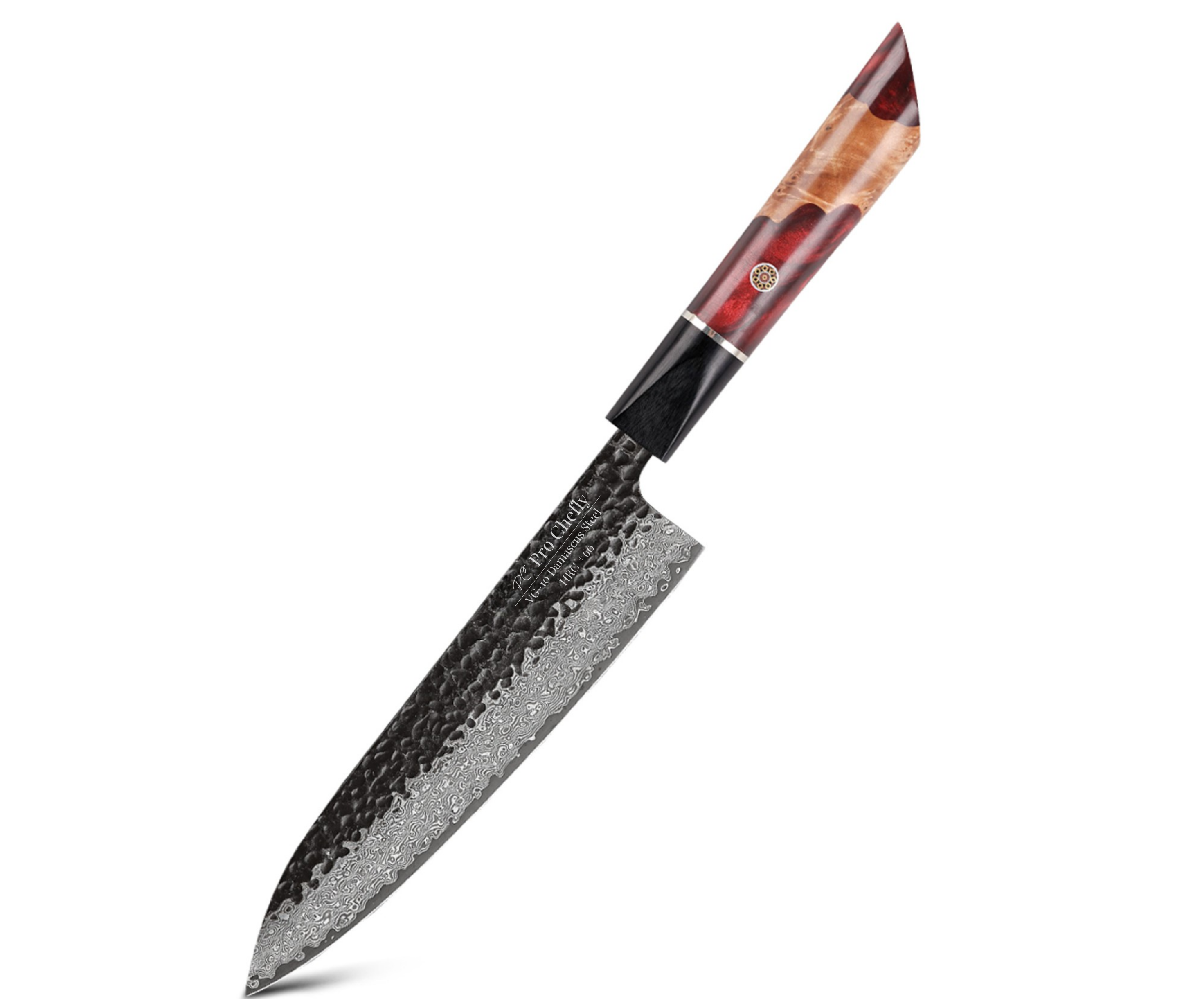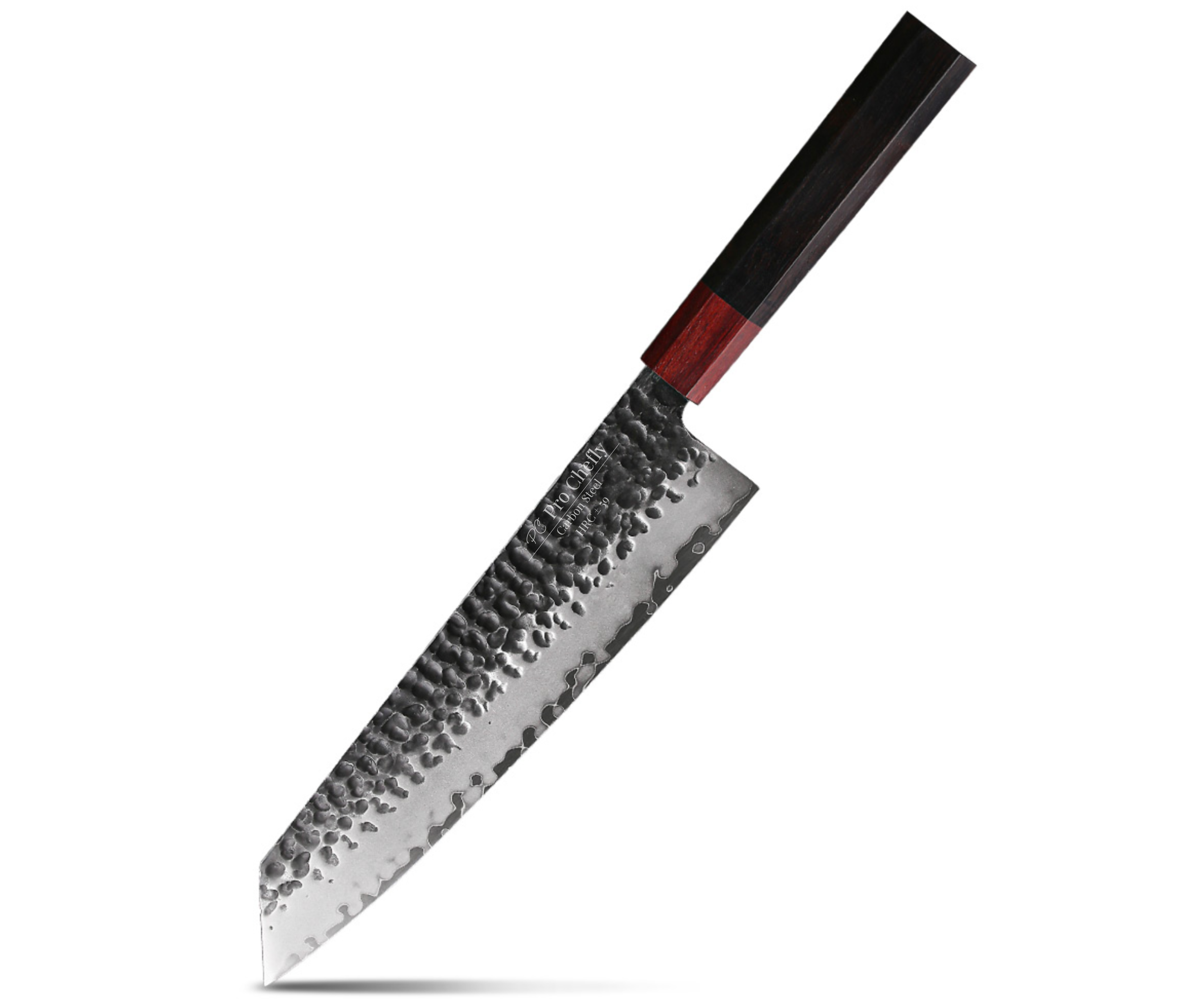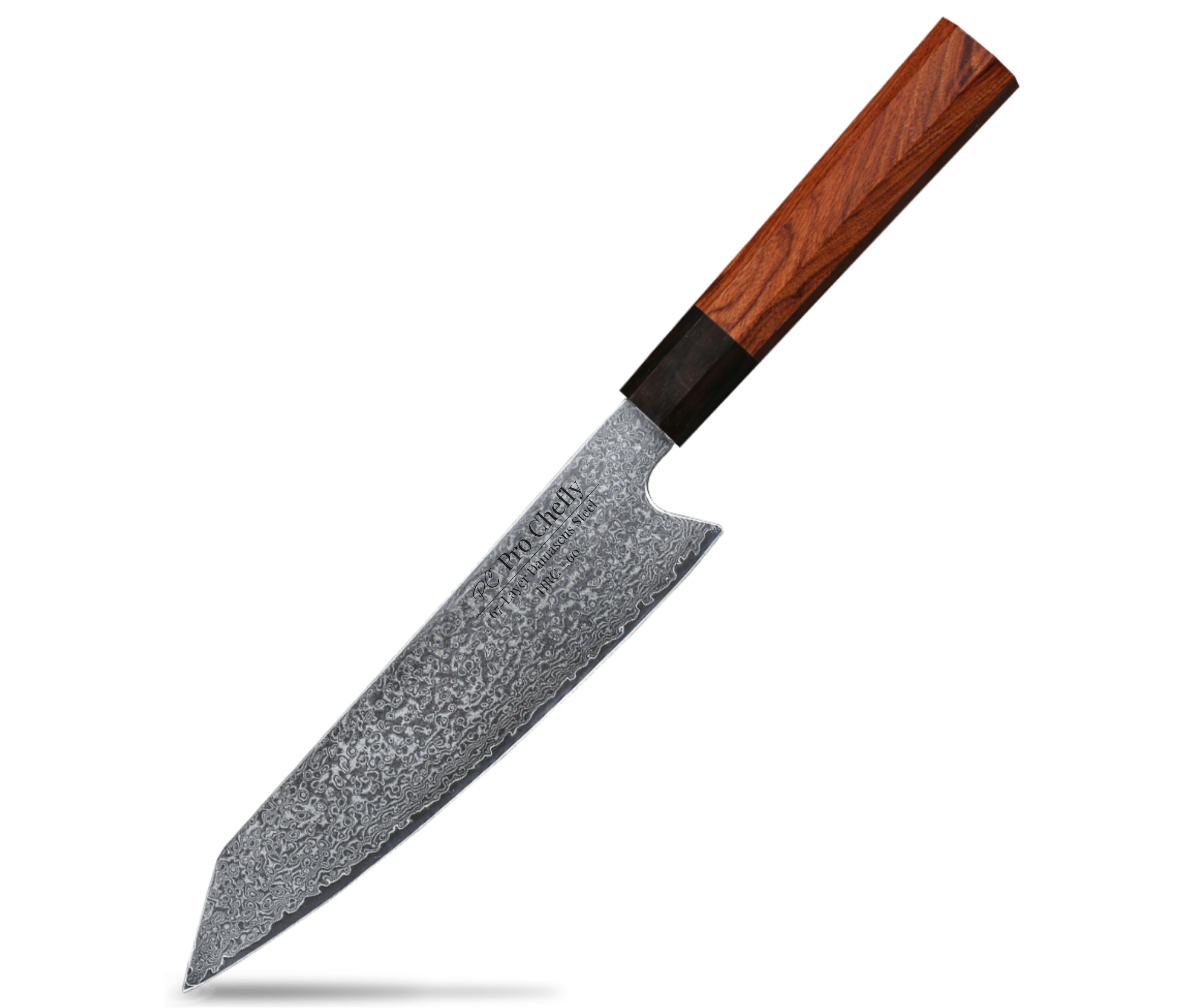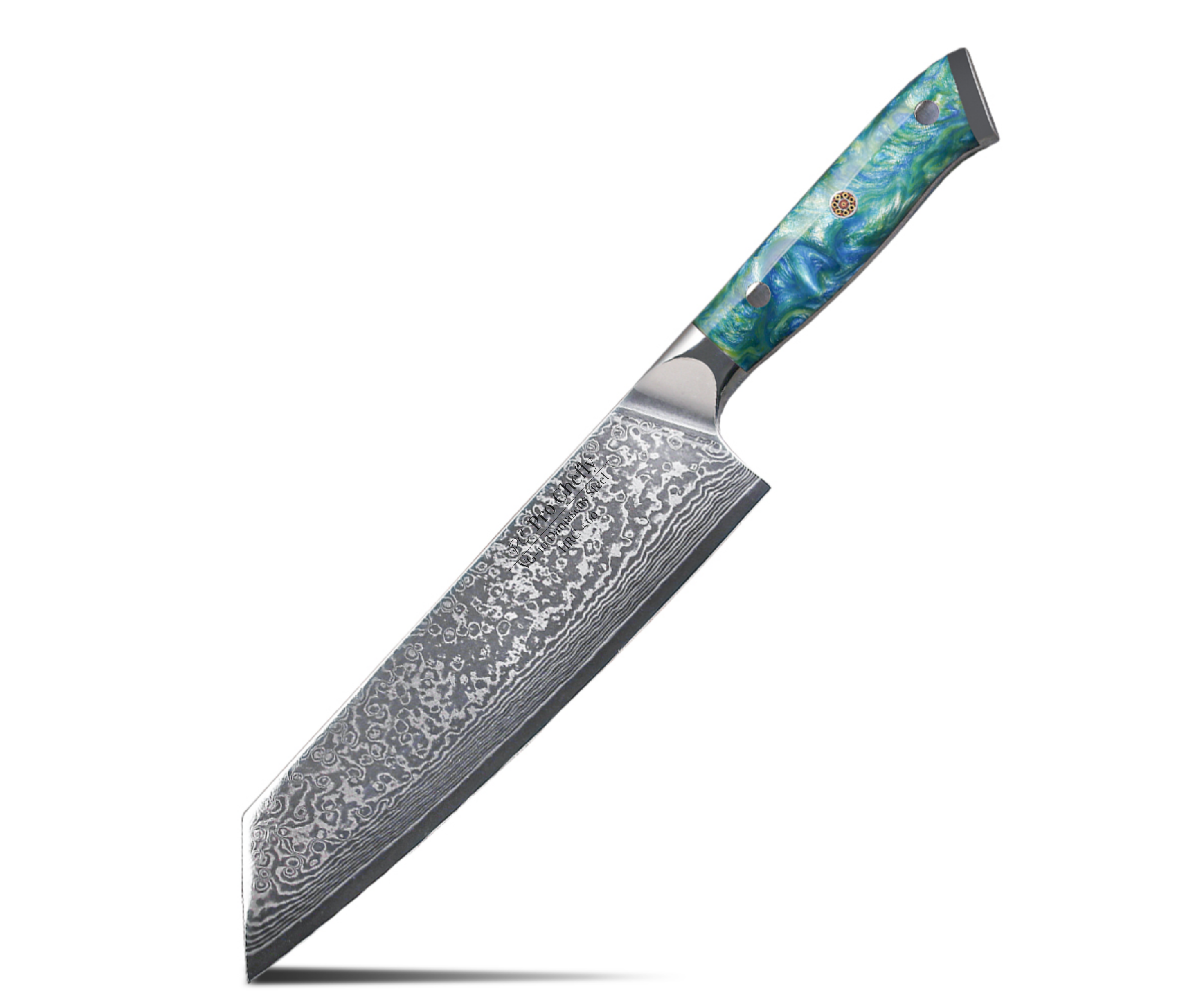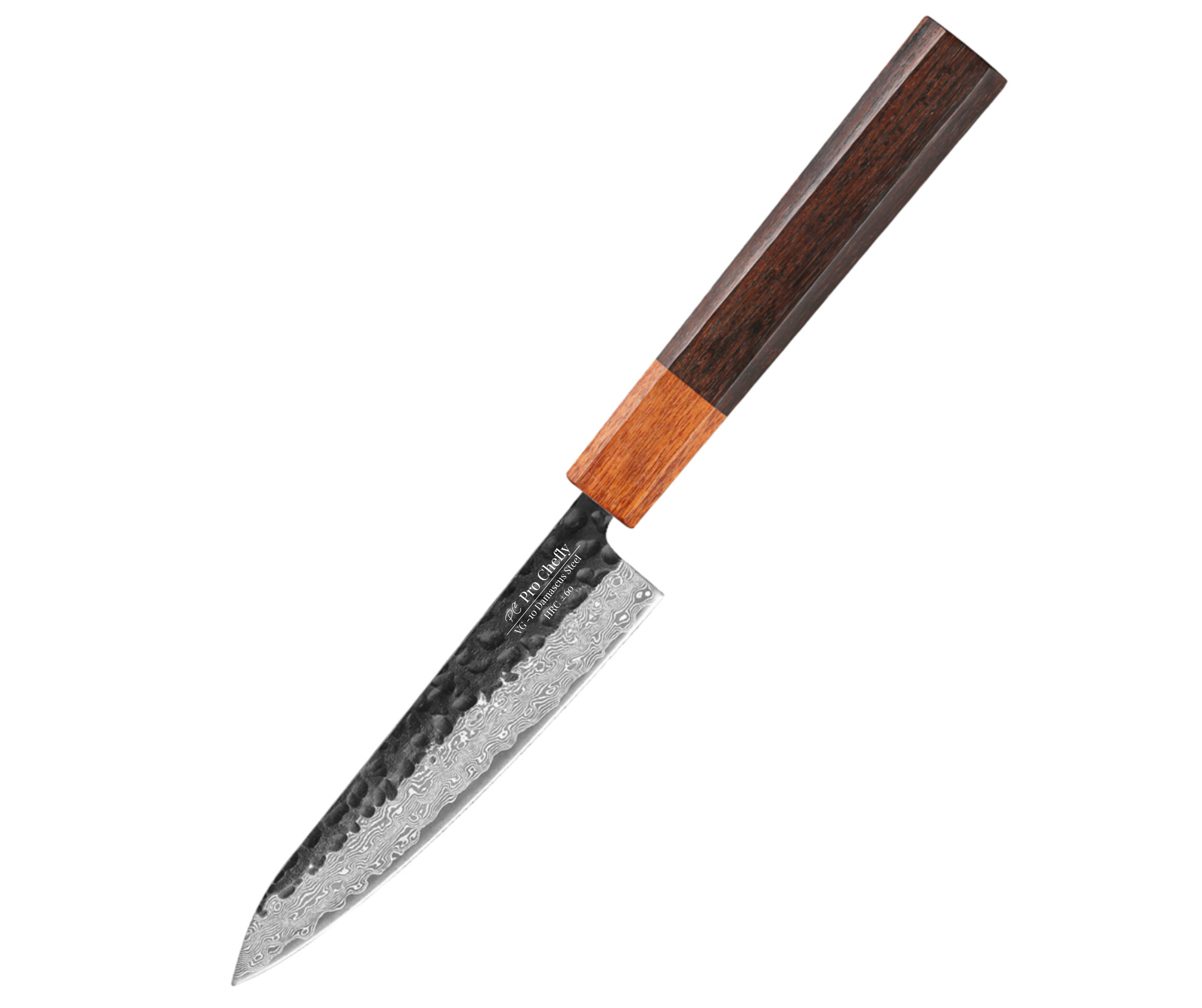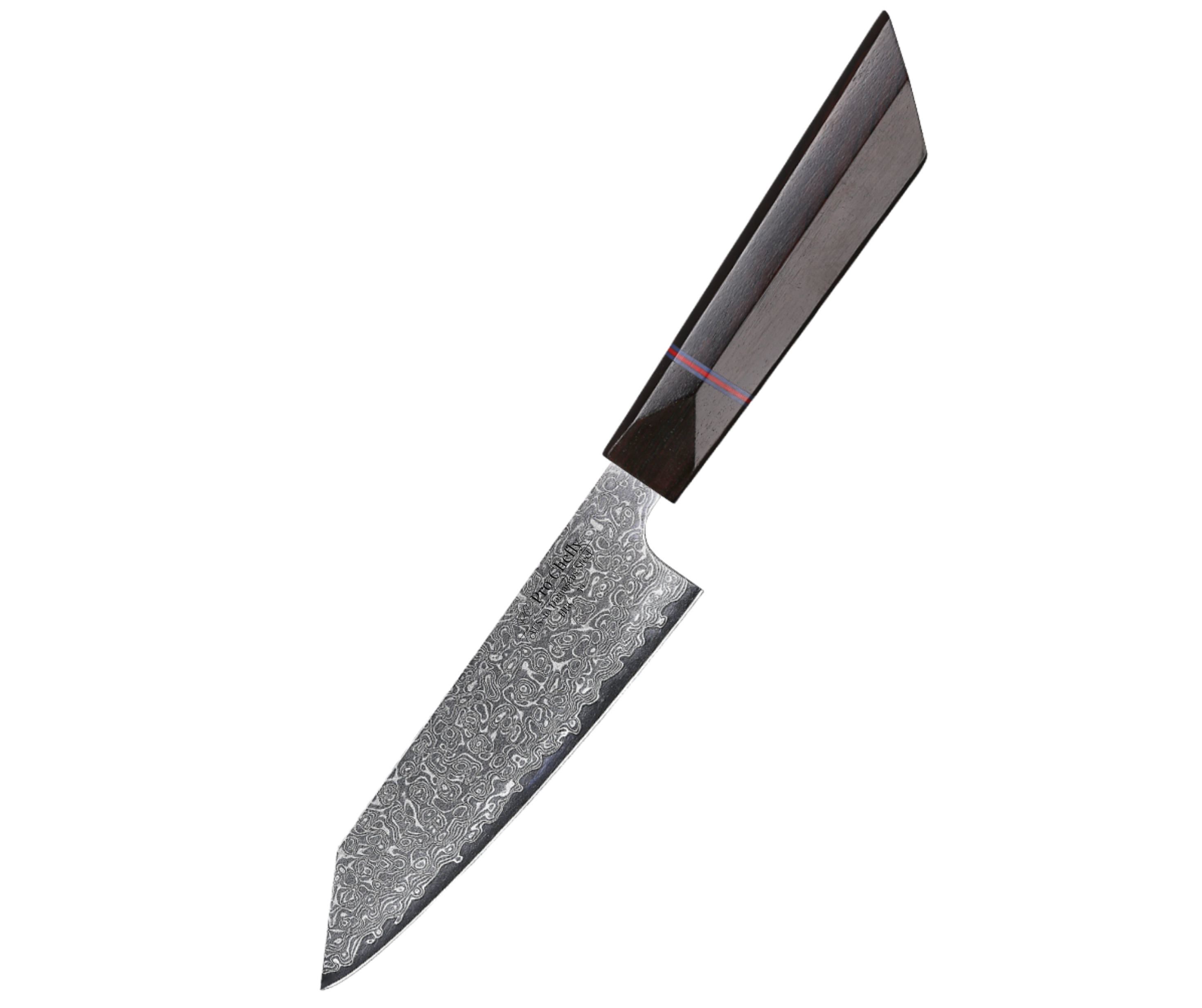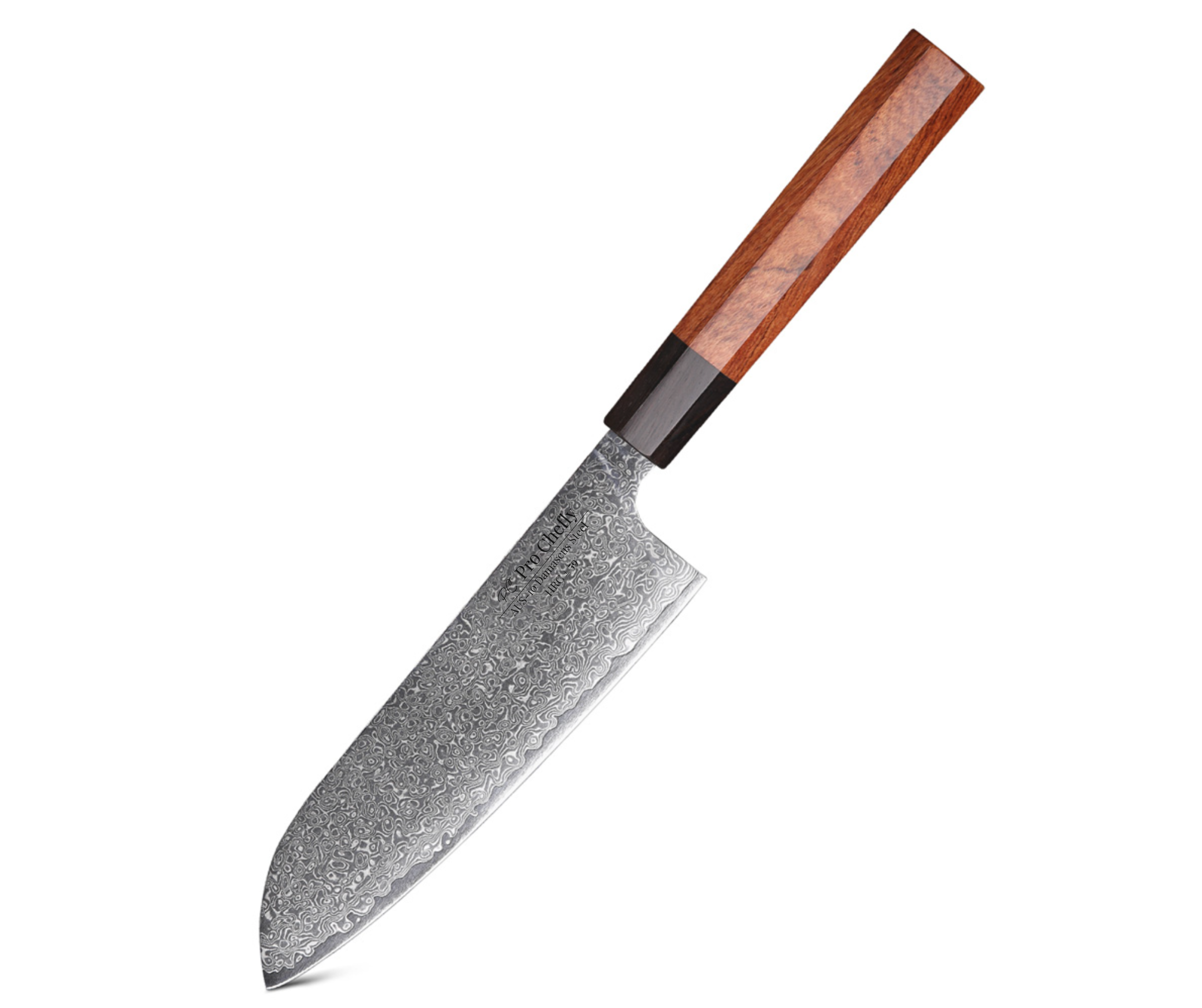Chef’s Overview
Dear Chefs, when the chill sets in and the kitchen smells of simmering broth and roasting root vegetables, there’s one question that always stirs debate — should you reach for the Gyuto or the classic Western Chef Knife? Both can dice, chop, and carve their way through fall’s hearty bounty, but the difference lies in how they feel in your hand and how they honor the ingredients. Today, we’re diving into which blade truly earns its keep in stew season.

The Origins of the Debate – A Tale of Two Cultures
Both knives tell their own story. The Western Chef Knife, forged for versatility, was born to tackle everything from carving roasts to chopping herbs in one swift motion. The Gyuto — Japan’s elegant answer — emerged when Japanese craftsmen adapted their sword-making artistry to Western-style cooking. Think of it as a samurai’s precision meeting a French chef’s pragmatism.
When I first held a Gyuto, I felt like I was wielding control itself — lighter, sharper, and designed for fluid, rhythmic cuts. The Western Chef Knife, on the other hand, gives you heft. It powers through dense carrots or thick chuck roast with confidence. Both can make magic in the kitchen — but choosing between them depends on your cooking rhythm and what’s in your pot this season.
The Anatomy of Efficiency – How Each Knife Handles Fall Ingredients
If your cutting board is loaded with onions, potatoes, and celery — the holy trinity of any good stew — here’s where you’ll start to notice key distinctions.
Balance and Weight
The 8" VG-10 Damascus Chef Knife from our line mirrors the Western profile — a solid spine and balanced weight perfect for push-cutting into hearty vegetables. It’s got that reassuring feel that says, “I’ve got this.” But when finesse is needed — trimming sinew, slicing mushrooms thin enough to melt into the broth — the 8" VG-10 Damascus Gyuto glides through with a dancer’s grace.
The difference? Weight distribution. The Gyuto’s center of gravity sits closer to the blade, letting the motion come from your wrist instead of your shoulder. It’s less about force, more about flow.
Blade Shape and Rocking Motion
The Western Chef Knife favors a rounded belly — ideal for that satisfying rock-chop motion. The Gyuto’s edge is flatter toward the heel, meaning it excels in long, slicing motions. If you’ve ever read our Gyuto vs Chef Knife – Which Offers the Sharpest Precision for Carving Season, you’ll remember how that flatter profile shines when slicing proteins cleanly without tearing muscle fibers.
For fall stews, where meat tenderness meets vegetable integrity, that cleaner cut can make all the difference.
Edge Retention and Steel Quality – The Hidden Power Behind the Blade
You can’t talk performance without talking steel. The Gyuto’s VG-10 Damascus core is a legend in the kitchen world — high carbon content wrapped in layers of protective steel, giving it exceptional edge retention and corrosion resistance. We’ve broken down its secrets before in How VG-10 Steel Balances Edge Retention and Durability.
By contrast, most Western Chef Knives favor softer steels. They sharpen faster but dull quicker, especially after a weekend of stew prep. That’s where our 8" VG-10 Damascus Chef Knife earns its reputation — it merges Western form with Japanese metallurgy. It’s the hybrid workhorse you didn’t know you needed.
Practical Precision – Which Knife Wins for Fall Stews?
Let’s break it down, Dear Chefs:
For Meat Lovers
If you’re breaking down short ribs or trimming brisket for a slow braise, the Gyuto’s thin blade and acute edge angle let you glide through fat with surgical precision. It’s what I call the “whisper cut.” Less resistance means less damage to muscle fibers — and juicier bites once cooked.
For Vegetable-Heavy Stews
When it’s time to cube root vegetables — parsnips, carrots, potatoes — the Western Chef Knife’s weight gives you efficiency and speed. One clean push through dense produce, and your mise en place looks as good as it cooks. But remember, as we discussed in Santoku Knives vs Western Chef Knives – Breaking Down the Differences in Fall Cooking, there’s beauty in matching the knife to your rhythm, not just the ingredient.
For Everyday Cooks
If you’re the kind who cooks every night and wants one blade to rule them all, the Gyuto wins by versatility. It’s lighter, easier on the wrist, and retains its edge beautifully through back-to-back cooking sessions.
Why Pro Chefly Recommends Both for Fall Cooking
At Pro Chefly, we never pick sides — we pick purpose. The truth? A great chef uses both. The Gyuto for finesse, the Chef Knife for power. Together, they’re like bass and treble — different tones that make the same song sing.
When we designed our 8" VG-10 Damascus Gyuto, we wanted it to reflect the same confidence as our 8" VG-10 Damascus Chef Knife — both built to tackle seasonal challenges. Whether you’re mincing garlic for Butter Chicken Done Right or dicing carrots for Butternut Squash Soup with a Chef’s Touch, each cut should feel effortless, almost meditative.
If you love how steel tells its story, take a peek at What Makes Damascus Steel Knives Different from Stainless Steel. It’s a deep dive into why we choose the materials we do — because performance is only as good as the craft behind it.
The Final Slice – The Knife That Matches Your Cooking Soul
Dear Chefs, the Gyuto and Chef Knife aren’t rivals — they’re companions. One whispers precision; the other speaks power. The best choice isn’t about the blade; it’s about you.
So next time you’re making a hearty fall stew, ask yourself: do I want flow or force? If your answer is “both,” then welcome to the mindset of a true Pro Chefly cook. Because mastery isn’t about choosing one tool — it’s about knowing when to reach for which.
As for me? I’ll be stirring my pot of short rib stew, Gyuto in hand, Chef Knife resting by the board, and the kitchen full of that unmistakable autumn comfort we all crave.
Knife Collections
Shop the latest in Pro Chefly Damascus Knives
Chef's Notes
Stay up to date with the latest kitchen stories and recipes

- October 27, 2025
Dear Chefs, this one’s for the nights when autumn is in full swing — the air cool, the kitchen warm,...

- October 26, 2025
Dear Chefs, when the pumpkins are glowing and your countertop is dusted with sugar instead of flour, precision becomes the...

- October 20, 2025
Dear Chefs, can we talk about the real hero of fall breakfasts and cozy weekend lunches? It’s not the pumpkin...
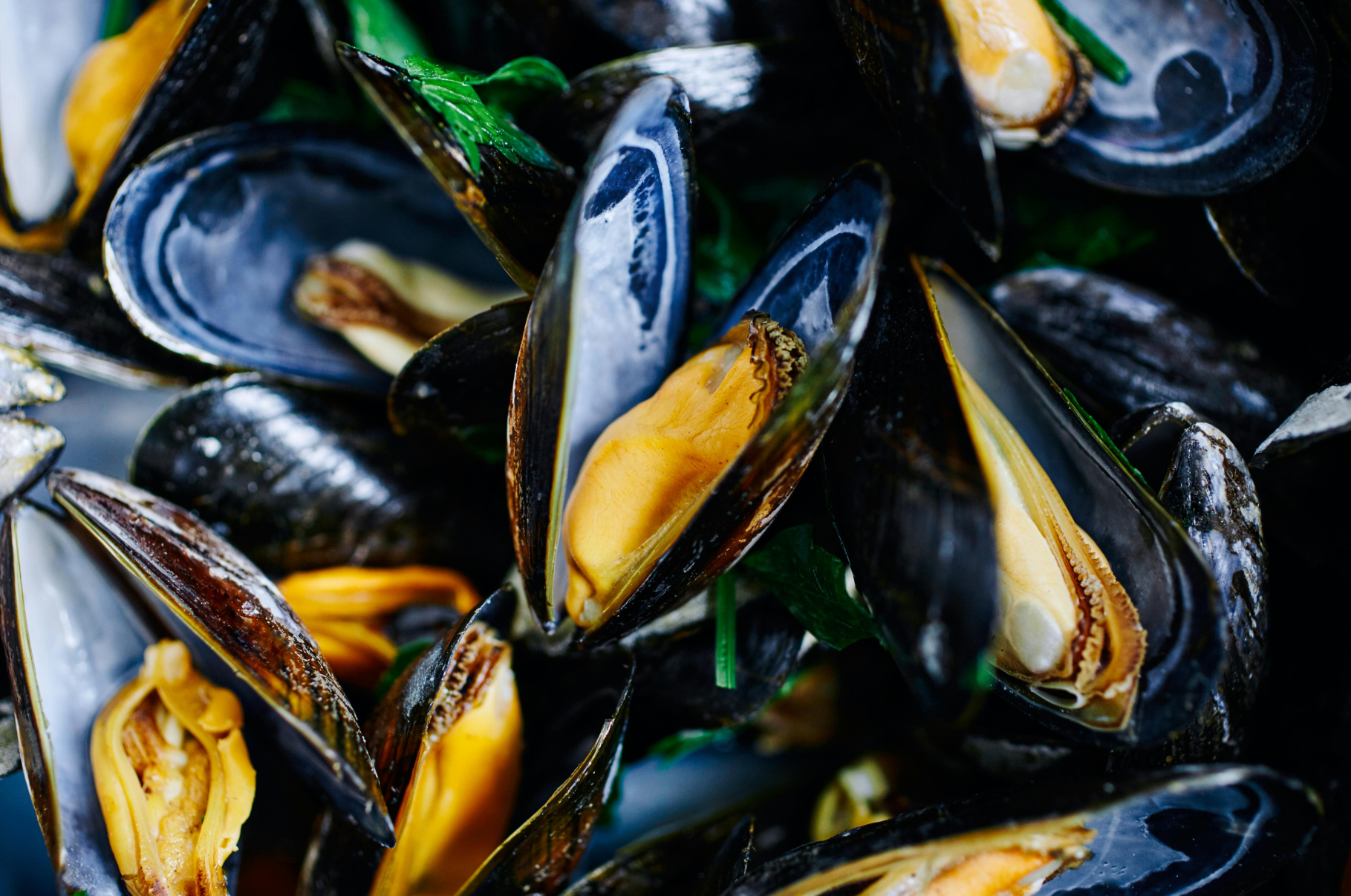
- October 12, 2025
Dear Chefs, this bistro-classic comes together in minutes: sweet mussels, a crisp white wine, and a silky butter emulsion you’ll...
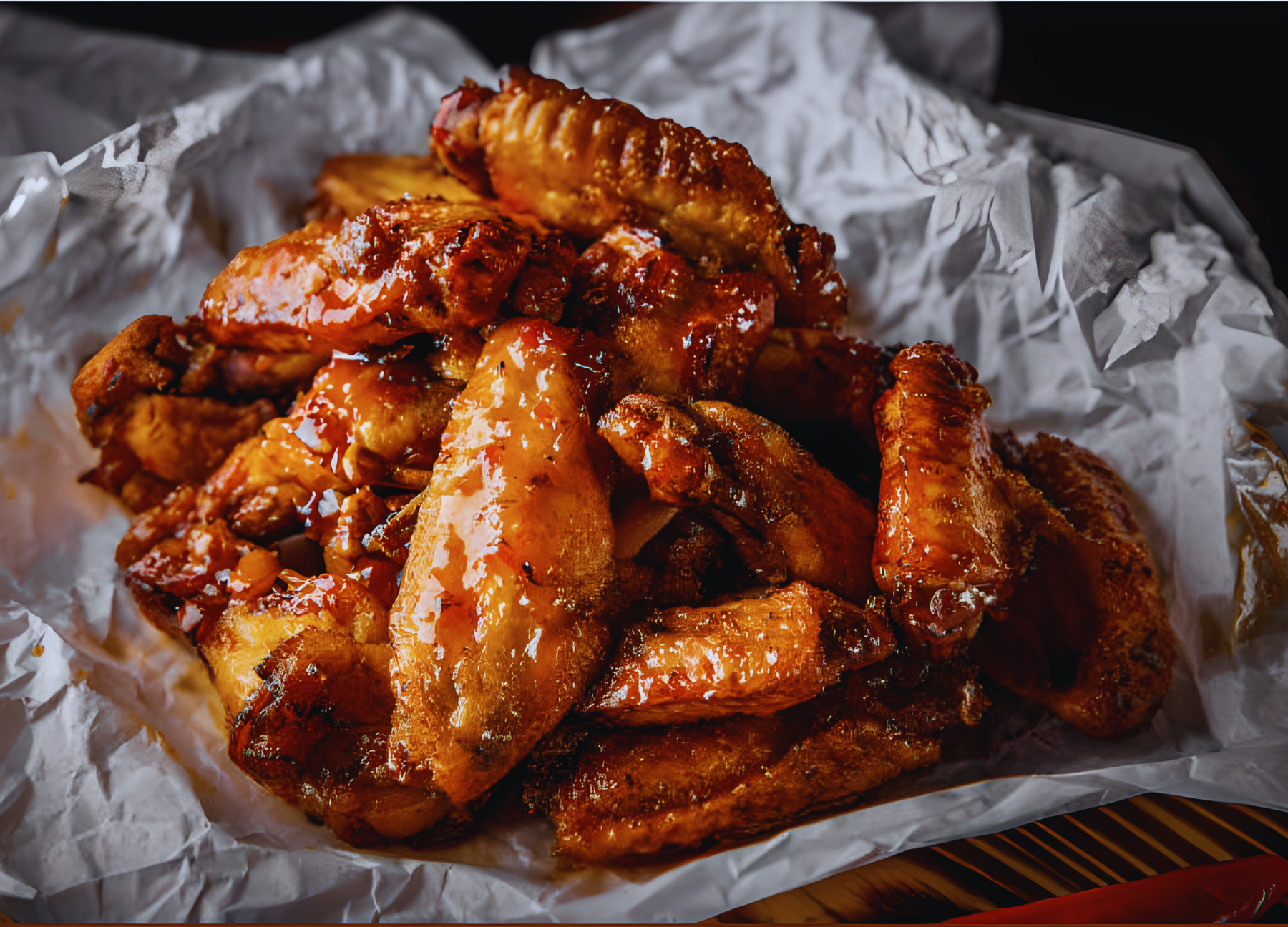
- September 16, 2025
Dear Chefs, there are few things as sacred as game day rituals: the jersey, the TV remote, and, of course,...

- September 11, 2025
Dear Chefs, some dishes don’t just feed the stomach—they hug the soul. Butter chicken is one of those dishes, rich...
- Choosing a selection results in a full page refresh.
- Opens in a new window.


